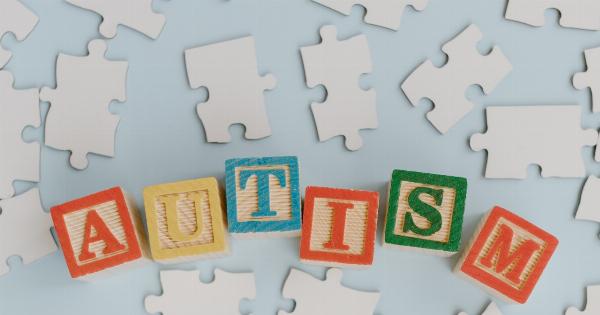Autism is a neurodevelopmental disorder that affects communication, social interaction, and behavior. One of the key characteristics of autism is impaired speech and language skills.
By recognizing and understanding the speech and language indicators of autism, we can better support individuals on the autism spectrum and improve their overall quality of life. In this article, we will explore the speech and language indicators of autism and discuss strategies for effectively communicating with individuals on the spectrum.
Delayed Speech Development
Delayed speech development is one of the earliest indicators of autism. Children with autism may exhibit delays in acquiring language skills compared to their typically developing peers.
They may have difficulty in babbling, pointing, and using gestures to communicate their needs and wants. The delay in speech development might be accompanied by a lack of interest in engaging in verbal communication.
Difficulty with Social Communication
Individuals with autism often struggle with social communication, which involves using verbal and nonverbal cues to interact with others effectively.
They may have difficulty understanding and using gestures, facial expressions, and body language to convey and interpret social messages. Additionally, they might struggle with turn-taking in conversations, maintaining appropriate eye contact, and understanding sarcasm or metaphors.
Repetitive or Stereotyped Language
Another speech and language indicator of autism is the presence of repetitive or stereotyped language. Individuals with autism may repeat certain words or phrases (known as echolalia) without understanding their meaning.
They might also have a fascination with specific topics and engage in extensive monologues on those subjects, disregarding the interests or responses of others. Their language may lack flexibility and adaptability.
Differences in Prosody
Prosody refers to the rhythm, intonation, and stress patterns in speech. Individuals with autism often exhibit differences in prosody.
They may speak in a monotonous or mechanical tone, lacking the natural variations and inflections typically observed in speech. This can make their communication sound flat or robotic, which may affect their ability to convey emotions effectively.
Literal Understanding of Language
Individuals with autism tend to have a literal understanding of language and may have difficulty interpreting figurative language and abstract concepts.
They may struggle to comprehend jokes, sarcasm, idioms, or metaphors, as they primarily rely on concrete and factual information. This literal interpretation of language can impact their social interactions and limit their ability to engage in nuanced conversations.
Difficulty with Pragmatic Language Skills
Pragmatic language skills refer to the ability to use language appropriately in various social contexts. Individuals with autism often struggle with pragmatic language skills.
They may have difficulty initiating and maintaining conversations, understanding social rules for turn-taking and topic shifts, and adapting their communication style based on the needs of others. They may exhibit a tendency to dominate conversations or have trouble recognizing when it is appropriate to speak or stay silent.
Sensory Challenges Affecting Communication
Many individuals with autism experience sensory challenges that can impact their communication. Sensory sensitivities to sounds, textures, or bright lights can distract or overwhelm them, making it difficult to focus on verbal communication.
Similarly, sensory-seeking behaviors may lead to a lack of attention and engagement in conversations. Addressing sensory challenges can significantly improve communication outcomes for individuals with autism.
Speech Apraxia
Speech apraxia is a motor speech disorder that impacts the ability to coordinate the muscles used in speech. Some individuals with autism may experience speech apraxia, leading to difficulties in planning and executing speech movements.
This can result in inconsistent speech production, difficulty pronouncing certain sounds, and challenges with articulation and phonological patterns.
Use of Visual Supports
Visual supports, such as visual schedules, social stories, and visual cues, can greatly aid communication for individuals with autism.
Visual supports provide a concrete representation of information and help individuals understand and follow verbal instructions. They can also assist in developing vocabulary, promoting routine understanding, and enhancing social communication skills.
Augmentative and Alternative Communication (AAC)
In cases where verbal communication is limited or non-existent, individuals with autism can benefit from Augmentative and Alternative Communication (AAC).
AAC systems include picture symbols, sign language, and speech-generating devices that enable individuals to express their thoughts, needs, and feelings. AAC can bridge the communication gap, empowering individuals with autism to effectively communicate with others.
Conclusion
Understanding the speech and language indicators of autism is crucial for recognizing and supporting individuals on the autism spectrum.
Delayed speech development, difficulty with social communication, repetitive language, prosody differences, literal understanding of language, pragmatic language challenges, sensory challenges, speech apraxia, and the use of visual supports and AAC are all important aspects to consider when working towards effective communication with individuals with autism. By cracking the code of autism’s speech and language characteristics, we can enhance communication opportunities and promote a more inclusive society.






























